The internet connects people all over the world. But could the internet also connect us with dolphins, apes, elephants and other highly intelligent species?
In a bold talk in Session 10 of TED2013, four incredible thinkers come together to launch the idea of the interspecies internet. Each takes four minutes to talk, then passes the metaphorical baton, building the narrative in parts.
The talk begins with Diana Reiss, a cognitive psychologist who studies intelligence in animals. She shows us a video of an adorable dolphin twirling in the water. But the dolphin isn’t spinning playfully for the camera — the dolphin is watching itself in a two-way mirror.
“A dolphin has self-awareness,” says Reiss. “We used to think this was a uniquely human quality, but dolphins aren’t the only non-human animals to show self-recognition in a mirror. Great apes, our closest relatives, also show this ability.” Ditto for elephants and even magpies.
Reiss shares her work with dolphins — she’s been teaching them to communicate through an underwater keyboard of symbols that correspond to whistles and playful activities. Through this keyboard, the dolphins learned to perform activities on demand, and also to express their desire for them. (For more on how a similar dolphin keyboard works, read up on Denise Herzing’s talk from earlier today.)
“You can’t get more alien than the dolphin. We’re separated by 95 million years of divergent evolution. These are true non-terrestrials,” says Reiss. “This self-organized learning, the same thing we heard from TED Prize winner Sugata Mitra. I’m suggesting this is our Hole in the Water.”
Reiss was conducting this work on her own. And then she got a call from iconic musician Peter Gabriel.
“I make noises for a living, and on a good day it’s music,” says Gabriel. He has always looked into the eyes of animals and wondered what is going on inside their heads, he says, soe excitedly read about research, like Reiss’, examining communication with animals.
“What was amazing to me was that [the animals] seemed a lot more adept at getting a handle on our language than we were at getting a handle on theirs,” says Gabriel. “I work with a lot of musicians from around the world. Often we don’t have any common language at all. We sit behind our instruments and it’s a way to connect.”
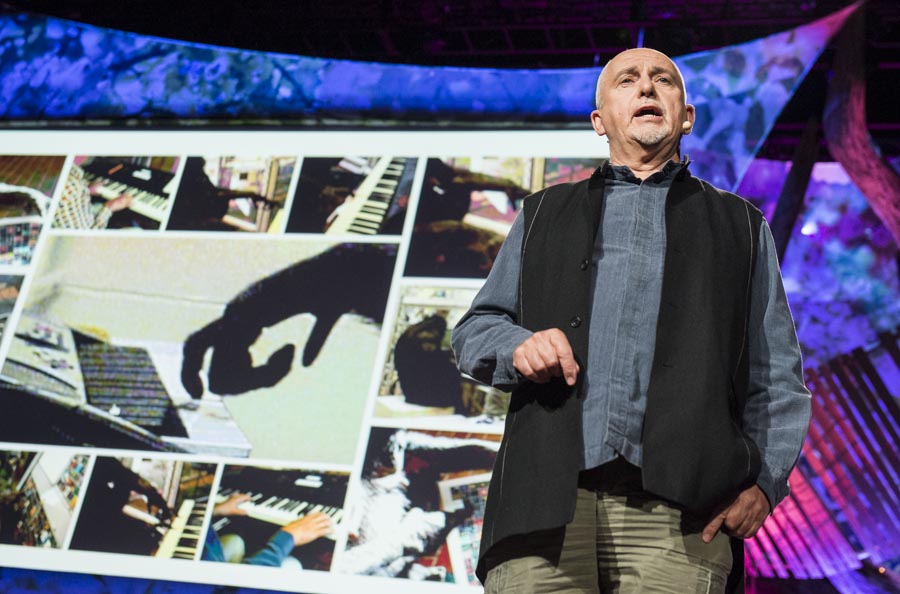 So Gabriel started cold-calling scientists to see if he could be a part of this work. His goal: To try writing music with an animal. And he got his chance.
So Gabriel started cold-calling scientists to see if he could be a part of this work. His goal: To try writing music with an animal. And he got his chance.
In a video clip that raises oohs and ahhs from audience, Gabriel shares a video of a bonobo with a keyboard. While bonobos had been introduced to percussion instruments before, and bashed them with their fists, this was the first time this bonobo had ever seen a keyboard. And with accompaniment, she played truly amazing music.
“She discovers a note she likes. She finds the octave,” says Gabriel, narrating the beautiful melody in the video. “We began to dream … What would happen if we could somehow find new interfaces — visual, audio — to allow us to communicate with the remarkable beings we share the planet with.”
Gabriel brought the video of this unusual jam session to Neil Gershenfeld, the Director of MIT’s Center for Bits and Atoms.
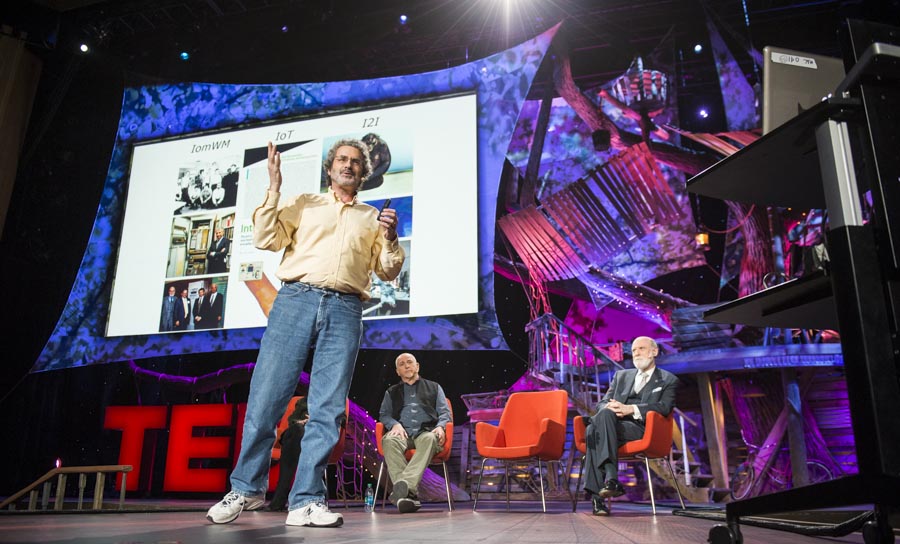 “I lost it when I saw that clip,” says Gershenfeld, stepping up to the stage. “I was struck by the history of the internet, because it started as the internet of middle-aged white men … I realized that we humans had missed something — the rest of the planet.”
“I lost it when I saw that clip,” says Gershenfeld, stepping up to the stage. “I was struck by the history of the internet, because it started as the internet of middle-aged white men … I realized that we humans had missed something — the rest of the planet.”
At this point, Gershenfeld video-conferenced in animals live — including orangutans in Waco, Texas, dolphins at the National Aquarium in Baltimore, and elephants in Thailand.
Gershenfeld is known for his work in the internet of things. And he thinks animals can be a part of it, too. “We’re starting to think about how you integrate the rest of the biomass of the planet into the internet,” he says.
Which brings us to Vint Cerf, who helped lay the foundations for the internet as we know it and is now vice president and Chief Internet Evangelist for Google.
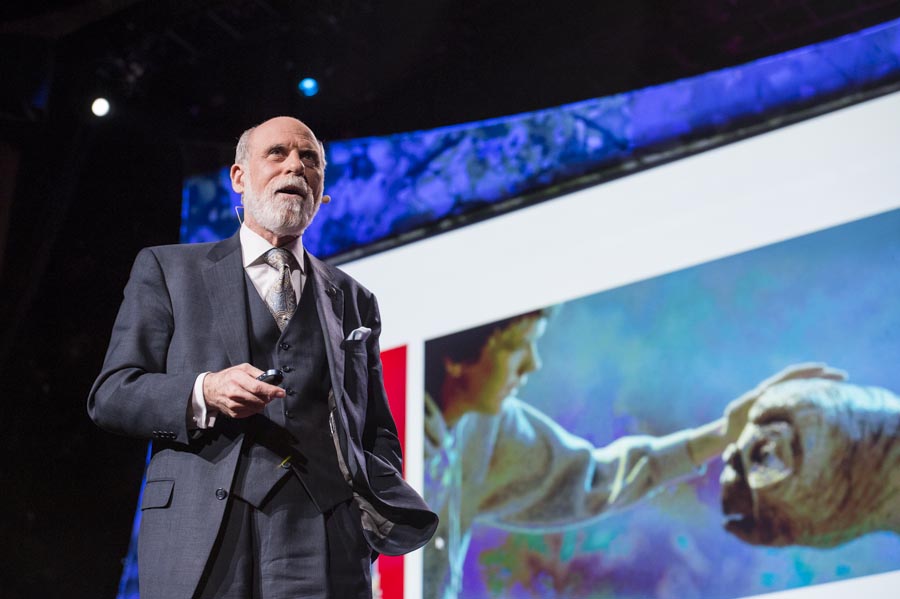 “Forty years ago we wrote the script of the internet. Thirty years ago we turned it on,” says Cerf. “We thought we were building a system to connect computers together. But we quickly learned that it’s a system for connecting people.”
“Forty years ago we wrote the script of the internet. Thirty years ago we turned it on,” says Cerf. “We thought we were building a system to connect computers together. But we quickly learned that it’s a system for connecting people.”
“You know where this is going,” Cerf continues, to a laugh, bringing it back to research in communicating with animals. “What’s important about what these people are doing: They’re beginning to learn how to communicate with species that are not us, but share a sensory environment. [They’re figuring out] what it means to communicate with something that’s not a person. I can’t wait to see these experiments unfold.”
So what’s next? The internet of things, yes, and the ability for us to communicate with computers without keyboards and mice. And in addition to the internet of species, he even imagines an interplanetary internet.
“These interactions with other animals will teach us, ultimately, how we might interact with an alien from another world,” says Cerf. “I can hardly wait.”
This talk is now available for viewing. Watch it on TED.com »
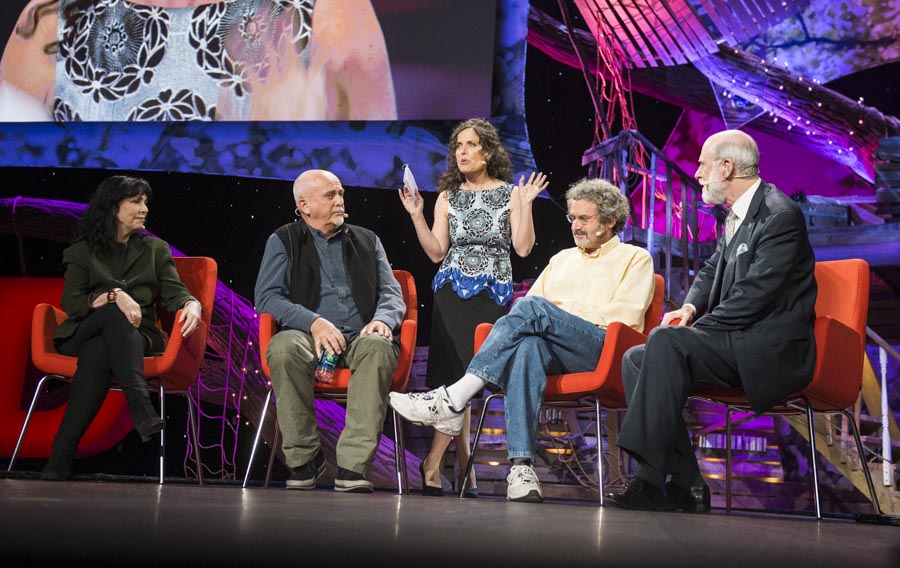
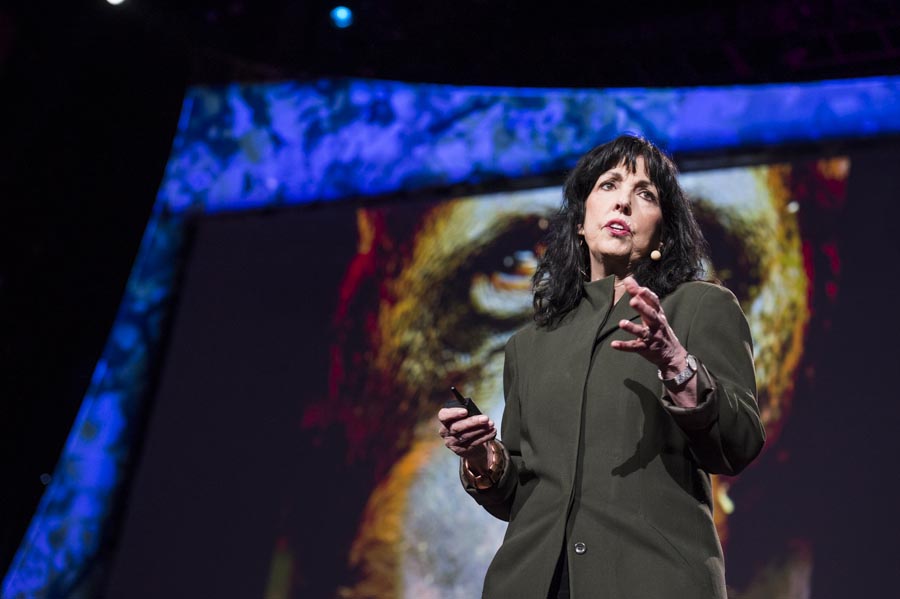
Comments (43)
Pingback: Vint Cerf arbeitet am Internet für Tiere und Aliens -silicon.de
Pingback: The interspecies internet
Pingback: Interspecies internet? » 10 Secondes Tigre
Pingback: Today in Tech: FIIs & Indian IT firms; Groupon CEO’s farewell letter and more gyanidost.com | gyanidost.com
Pingback: Dr. Richard Alan Miller » Blog Archive » The interspecies internet
Pingback: Nyhetscirkus » Peter Gabriel – nytt hot mot pälsindustrin?
Pingback: Vint Cerf acredita em internet que nos ligaria a animais e aliens – Tecmundo – Site Sucesso | My Blog
Pingback: Vint Cerf acredita em internet que nos ligaria a animais e aliens – Tecmundo | suporte-robot-posters.net.tf
Pingback: Vint Cerf acredita em internet que nos ligaria a animais e aliens – Tecmundo | fontes ss
Pingback: TED2013: Interspecies Internet?
Pingback: Vint Cerf acredita em internet que nos ligaria a animais e aliensOverTecno.com.br - Seu blog sobre Tecnologia e muito mais! | OverTecno.com.br - Seu blog sobre Tecnologia e muito mais!
Pingback: The Capitals™ – Capitalists' Magazine | 資本家札記 | Vint Cerf wants to use the Internet to talk to animals (and aliens)
Pingback: Vint Cerf wants to use the Internet to talk to animals (and aliens) | 5 For Business
Pingback: Vint Cerf wants to use the Internet to talk to animals (and aliens) | TechKudos
Pingback: Vint Cerf wants to use the Internet to talk to animals (and aliens) | CrowdBacon – The Startup Blog
Pingback: Vint Cerf wants to use the Internet to talk to animals (and aliens) | VentureBeat
Pingback: Today in Tech: FIIs & Indian IT firms; Groupon CEO’s farewell letter and more | Forbes India Blog
Pingback: Peter Gabriel plays with Bono(obo) – TED 2013 | Pro Bono Bono
Pingback: Wizmo Blog » Blog Archive » The interspecies internet: Diana Reiss, Peter Gabriel, Neil Gershenfeld and Vint Cerf at TED2013